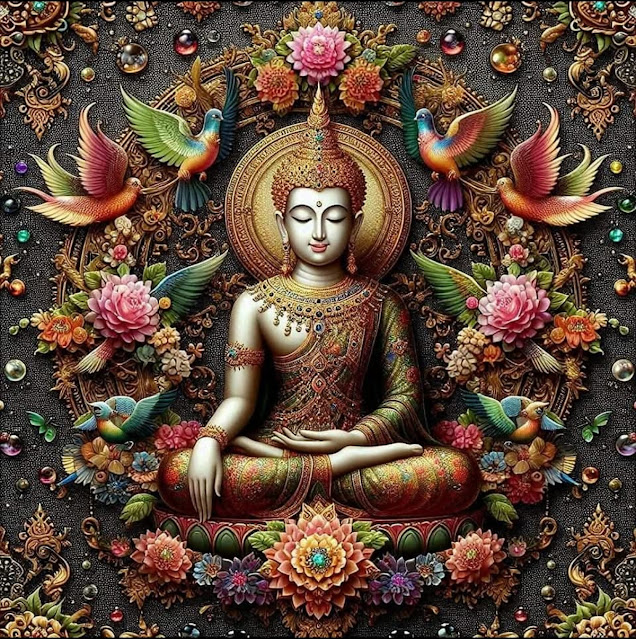In Vajrayana, blessings (jinlap) are not mere superstition or blind belief. They represent the subtle resonance of the guru’s realization entering the disciple’s heart.
When the disciple’s mind is open through devotion, blessings flow naturally, just as sunlight passes effortlessly through a clear window. Without devotion, the mind is clouded, like a window covered with dust.
A classic analogy is that of a radio receiver. The guru is like a powerful broadcasting station, transmitting the frequency of the awakened mind. The disciple’s devotion is the act of tuning the dial. If the frequency is set correctly, the music of Dharma plays clearly. If the dial is off, only static is heard.
When blessings are received, a shift begins to take place. The disciple experiences:
- Greater clarity in meditation.
- A spontaneous growth of compassion.
- A softening of rigid self-clinging.
In these moments, the guru’s instructions are no longer just words; they become living experience. The blessing of devotion allows the pointing-out instructions to pierce through conceptual understanding and touch the disciple’s innate awareness.
Everyday Signs of BlessingsThe fruits of devotion are not always dramatic. They often appear in simple, everyday ways:
- A sense of peace amidst hardship.
- Trust replacing fear and doubt.
- A quiet confidence that the Dharma is always present as guidance.
- A sudden insight arising from recalling even a single line of the guru’s teaching.
For some, a brief meeting with the guru may change the direction of an entire life. For others, the blessing is felt gradually — in the patience to endure suffering, in the courage to keep practicing, and in the subtle shift of perception from self-centeredness to compassion.
History gives us striking examples. Milarepa, Tibet’s great yogi, endured years of hardship under Marpa’s strict guidance. His unshakable devotion turned these trials into blessings, leading him from despair to enlightenment.
On a more ordinary level, many disciples find that devotion transforms how they meet daily challenges. Financial struggles, illness, or family conflicts are no longer seen as punishments, but as opportunities to deepen reliance on the guru’s instructions.
The Balance of Faith and EffortIt is important to remember that blecssings are not a substitute for effort. Devotion opens the gate, but the disciple must walk the path. Guru devotion is the catalyst that allows Dharma practice to penetrate the heart, but without the disciple’s steady effort, blessings remain unrealized potential.
Conclusion
Obstacles test devotion, and doubts refine it. When faith is stabilized, blessings flow, and realization becomes possible. Guru devotion is not blind worship but a living connection that awakens the disciple’s innate wisdom.
The ultimate fruit of devotion is to see no separation between the guru and one’s own mind. At that moment, the disciple discovers that the true guru has always been within. Devotion reveals this truth — transforming confusion into clarity, and turning ordinary perception into the radiant vision of awakening.
If you enjoy my articles and would like to support my creative work, you can make a small contribution below. Your support helps me continue writing and share ing more inspiring stories.(Payments are processed securely via PayPal.) :
Footnote
All effort has been made to respect the sacred boundaries of Vajrayana practice and to uphold the integrity of samaya vows and Dharma protectors.
Thank you for reading. May you find peace and great bliss. Your support helps spread the Buddha’s precious teachings and turn the Dharma wheel in the world.
Aspiration for Bodhichitta:
May the precious Bodhichitta, which has not yet arisen, arise and not diminish, but rather increase further and further.
Dedication of Merit:
By this merit, may we swiftly attain omniscience. Having overcome the enemies of wrongdoing, may we liberate all beings from the ocean of existence, with its stormy waves of birth, old age, sickness, and death.
Note
I do not own or infringe any copyright on
the picture(s).
Picture(s) courtesy and credit to the rightful
distributors and/or studios
The picture(s) are intended for editorial use only.








































